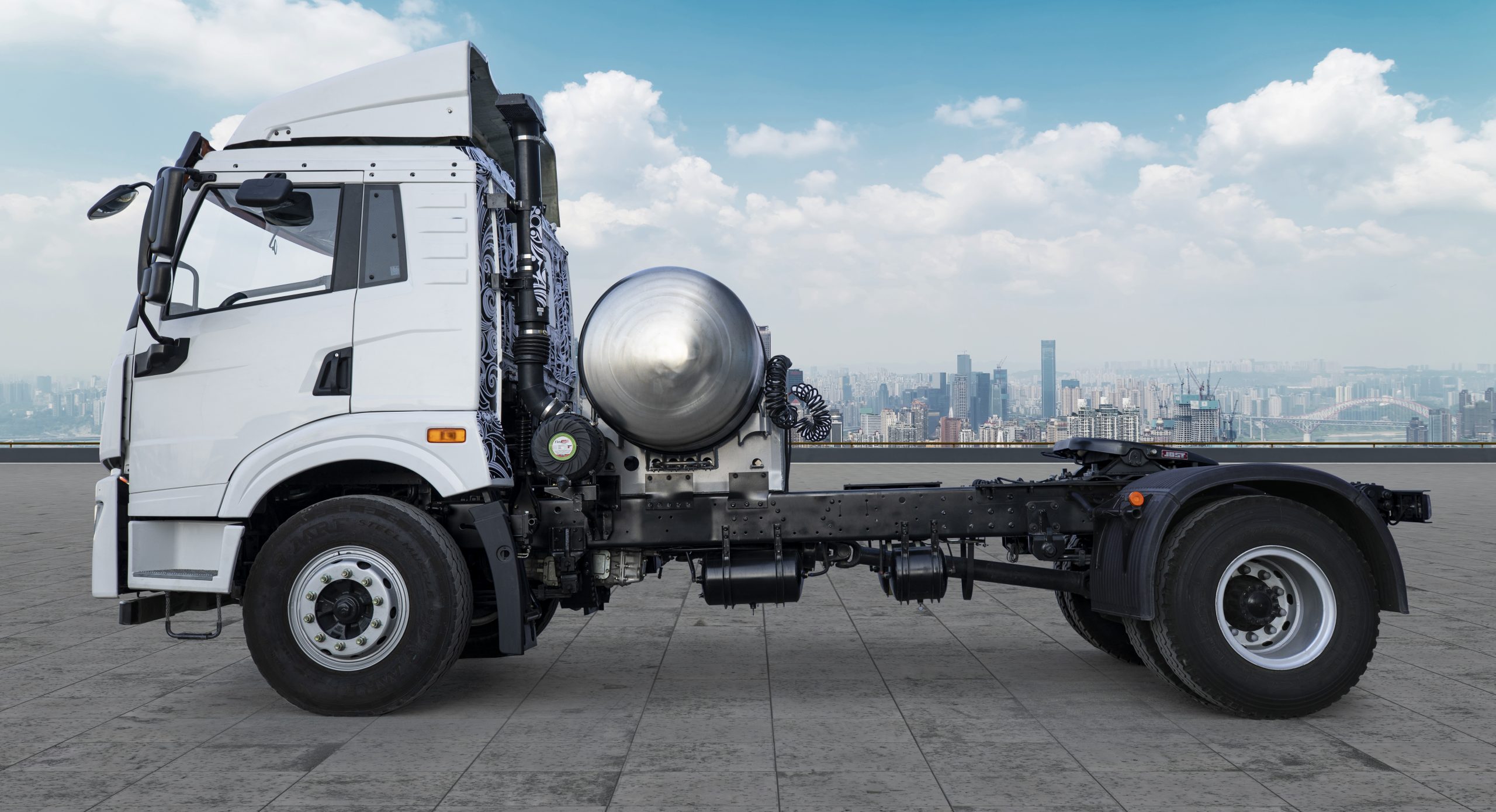
The transport sector is the backbone of any economy. As the fastest growing economy, there has been a rapid growth in urbanisation, population, a rise in e-commerce, and increasing income levels. This phenomenon implies that the demand for goods and services is only going to go up and there is a need for a robust logistics sector that includes transportation.
In India, the freight transportation sector is poised for rapid expansion. According to the report, ‘Transforming Trucking in India: Pathways to Zero-Emission Truck Deployment’ by Niti Aayog, heavy and medium-duty trucks currently handle 70 per cent of the domestic demand. With a booming road freight industry, the truck population is projected to soar from 4 million in 2022 to an estimated 17 million by 2050. This escalating trend underscores the pressing need for sustainable alternatives to the prevailing diesel-powered trucks dominating India’s highways.
However, this also implies a significant increase in the air pollution levels – one of the biggest crises that plagues our planet today. There are no prizes for guessing that the transportation sector plays a pivotal role in global air pollution. Data by Statista on ‘Transportation Emissions Worldwide’ estimated that the sector contributes 20 per cent of CO2 emissions globally and has become the second-largest carbon polluting sector in the world. According to the report – ‘Trucks: Heavy-duty Pollution & Action’ by Centre for Science and Environment, heavy-duty trucks stand out as a significant source of emissions, accounting for a staggering 66 per cent of particulate matter load from on-road transport – the highest in the country.
Alternative Technologies: The Way Forward
The above numbers are alarming to say the least.
Although the freight industry is dominated by conventional fuel trucks, the realisation that sustainable trucking is the future of the freight transportation industry is already there. Currently, the road freight transportation constitutes over 25 per cent of the total annual oil import expenses for India, and it is poised to increase fourfold by the year 2050. The implementation of Zero Emission Transportation (ZET) solutions, regardless of the timeframe, leads to sustained fuel cost reductions and a substantial decrease in oil imports. A deliberate and swift transition to ZET can amplify these benefits, fortifying India’s energy security.
The adoption of ZET technologies has the potential to curtail diesel consumption by a cumulative 838 billion liters by the year 2050. Consequently, this would translate to a remarkable reduction of ₹116 lakh crore in oil expenditures by 2050. In fact, with the growing awareness of the environmental impact of diesel trucks, commendable progress has been made in terms of alternative technologies in the industry.
For instance, Liquefied Natural Gas (LNG)-Powered Trucks are fast gaining traction as a greener fuel alternative in the global trucking industry, including India. For starters, the research by Niti Aayog found out that LNG-powered trucks emit up to 30 per cent less CO2 than diesel trucks – a significant step in combating climate change and decarbonize the transportation sector. While adoption of LNG trucks is gaining traction with upcoming LNG infrastructure, a substantial progress is also being made in zero-emission technology with Battery Electric trucks. Battery Electric Trucks (BETs) are powered by rechargeable batteries, emitting zero tailpipe emissions, thus improving the air quality and substantial reduction in greenhouse gas emissions. They are also quieter than diesel trucks, which can help to improve the quality of life for people living near trucking routes. Besides, they are well-suited for short-haul trucking applications and are cheaper to operate and maintain than diesel counterpart. From the nation’s standpoint, transitioning to BETs can lower the oil imports, thus fast-tracking India’s economic growth. There are discussions about other alternate technologies such as hydrogen and hybrids as well. However, Hydrogen would definitely be an alternative but from current technology and ecosystem readiness perspective it is at least some years away from being commercially viable.
Expediting Green Trucking Revolution
Though, there is a long way to go but the good news is that the Indian government recognizes the importance of reducing carbon emissions to mitigate the effects of global warming. Interestingly, a report by CRISIL estimated that India would need to invest anywhere between INR 22 lakh crore and INR 25 lakh crore on decarbonisation over the next seven years. Adopting battery electric trucks will further expedite the transition, thus enabling India to achieve its goal to reduce carbon emissions by 30 to 35 per cent by 2030. This also imply that we need to create large renewable assets and a significant investment in battery technologies for commercial vehicles industry. From a policy standpoint, extending current electric vehicle (EV) regulations to include trucks and implementing targeted policies to stimulate demand and supply can accelerate the growth of zero-emission transportation (ZET) and propel the sector towards significant electrification. These measures should aim to increase the adoption of both battery electric trucks (BETs) and LNG-powered trucks.
If left unaddressed, a multitude of obstacles in the realms of policy, infrastructure, and market dynamics will impede India from realising the substantial potential of electrifying its trucking industry. In the absence of dedicated initiatives, fleet operators encounter significant challenges in efficiently transitioning their fleets to zero-emission vehicles, primarily due to the higher initial capital costs associated with such vehicles in comparison to traditional diesel trucks. Moreover, the inadequate availability of charging infrastructure and a scarcity of zero-emission truck models further hinder the rapid adoption of these technologies.
Thus, by embracing innovative approaches encompassing policy development, technological advancements, infrastructure expansion, and financial strategies, collaborative efforts between public and private sectors can unlock unprecedented opportunities and create value during this transition. These efforts can entail initiatives like connecting fleet operators and manufacturers with tailored policy and financing solutions while simultaneously contributing to critical objectives related to emissions reduction and bolstering energy security.
Together, we can forge a cleaner and healthier future for all.
